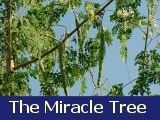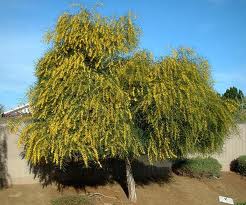 |
Contact usUnited Caribbean
Moringa
Drop of Hope School ProjectEcological ReforestationMoringa Agro Glamping |
home>> food for
life africa >>moringa miracle
tree>>
United Caribbean Trust
HUMAN FOOD: Acacia saligna is one of the promising species in southern Australia as a source of seed for human food. The seeds had reportedly been consumed by Aborigines; they were probably ground into flour and eaten with pounded root bark from various eucalypts . ANIMAL FOOD: LAMBS: This study indicates that feeding Awassi lambs on
diets including up to 40% of the TDN requirements from acacia did
counter act their feedlot performance. Therefore, the use of acacia
tested in the current experiment can be recommended for use by local
farmers for lamb production under North Sinai conditions which should
reduce their cost of meat production. During the dry season acacia
remain green and maintain a relatively high crude protein content
and is commonly used as protein and energy supplements for small
ruminants during this period. Acacia saligna shrubs showed a great
potentiality as fodder for growing sheep under arid and saline conditions
of Egyptian desert. RABBITS: The acute shortage of meat supply especially in Nigerian diets can be bridged by the production of highly prolific animals with short generation interval such as rabbits. The increase in the world population and high cost of conventional animal feed ingredients and low protein intake in most developing countries has necessitated Animal nutritionist to search for alternative sources of non-conventional feed ingredients that are cheap and readily available. Forages are cheap and can be used in rabbit diet since they utilize grasses and legumes efficiently. Optimum growth performance can be obtained by feeding forages with or without concentrates in their diets. Forages contain appreciable amount of protein, fat, minerals and carbohydrates that can support growth and production. The reviewed revealed that different forages inclusion levels from 30 to 100% enhance rabbit production and can help overcome the protein intake deficiency in the country. Therefore, the use of different forages for feeding rabbit is recommended. This study was conducted to determine the utilization of Acacia saligna in feeding growing rabbits from the desert and newly reclaimed areas. From the nutritional and economical efficiency viewpoints, Acacia leaf meal (ALM) could be used successively. It was safe for the formulation of a diet for weaning rabbits to include Acacia leaf meal up to 20% without adversely affecting their performance. Sourced: www.cabdirect.org |
|
SOWING SEEDS OF SUCCESS - MORINGA CURRICULUM SUPER FRUIT CURRICULUM NEW LIFE CURRICULUM
|
| Copyright © 2024 www.UnitedCaribbean.com. All rights reserved. Disclaimer Click to Contact us |




















































